Predictions & Data for this entry
| Model: abj | climate: MB, MC | migrate: | phylum: |
| COMPLETE = 2.6 | ecozone: MANE, MAm | food: bjP, jiD, jiS | class: |
| MRE = 0.080 | habitat: 0bMb, bjMp, jiMb | gender: D | order: |
| SMSE = 0.011 | embryo: Mbf | reprod: O | family: |
Zero-variate data
| Data | Observed | Predicted | (RE) | Unit | Description | Reference |
|---|---|---|---|---|---|---|
| tj | 35 | 37.92 | (0.08355) | d | time since birth at metam | fao |
| tp | 640.5 | 229.1 | (0.6423) | d | time since birth at puberty | fao |
| am | 1825 | 1733 | (0.05023) | d | life span | fao |
| Lb | 0.2 | 0.1724 | (0.1379) | cm | total length at birth | fao |
| Lj | 0.6 | 0.526 | (0.1233) | cm | total length at metam | fao |
| Lp | 3 | 3.045 | (0.01498) | cm | total length at puberty | fao |
| Li | 8.6 | 9.498 | (0.1044) | cm | ultimate total length for female | fao |
| Lim | 6.2 | 8.276 | (0.3349) | cm | ultimate total length for male | fao |
| Wwb | 2.8e-05 | 3.374e-05 | (0.2051) | g | wet weight at birth | fao |
Uni- and bivariate data
| Data | Figure | Independent variable | Dependent variable | (RE) | Reference |
|---|---|---|---|---|---|
| tL_f | 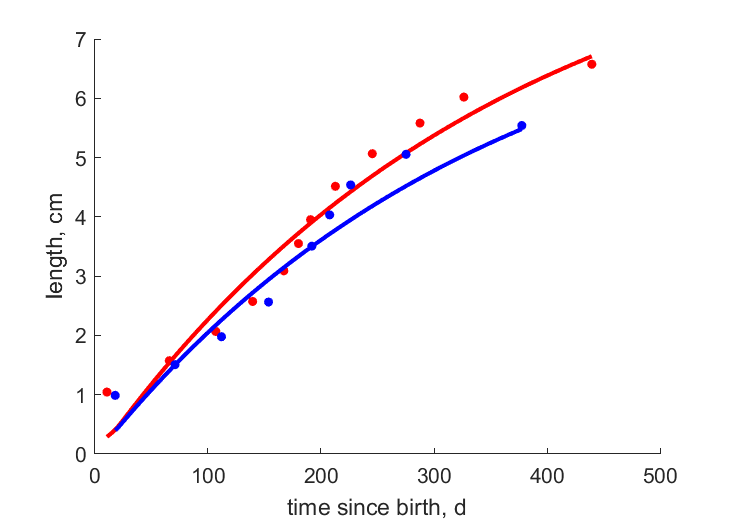 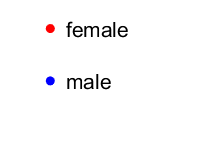 | time since birth | length | (0.08199) | fao |
| tL_m |   | time since birth | length | (0.09316) | fao |
| LN | 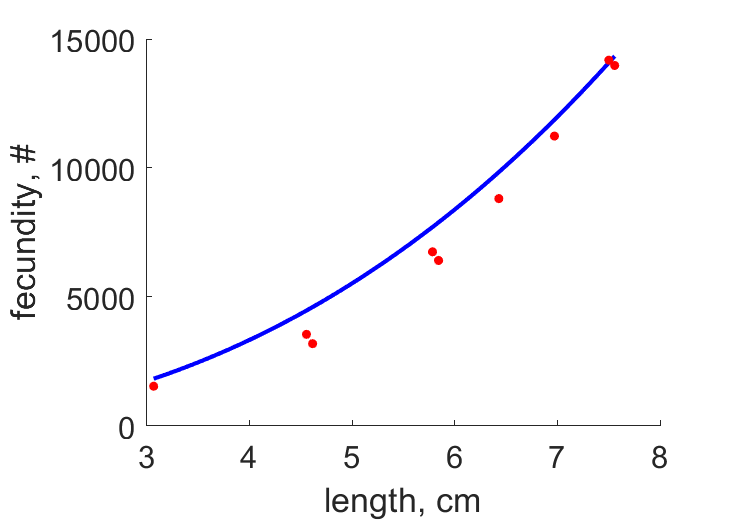 | length | fecundity | (0.1032) | fao |
| LW_f | 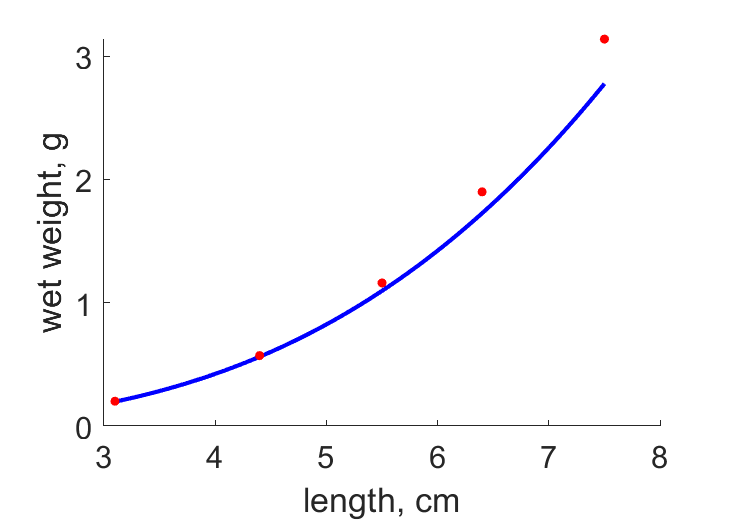 | length | wet weight | (0.08812) | fao |
| Tab | 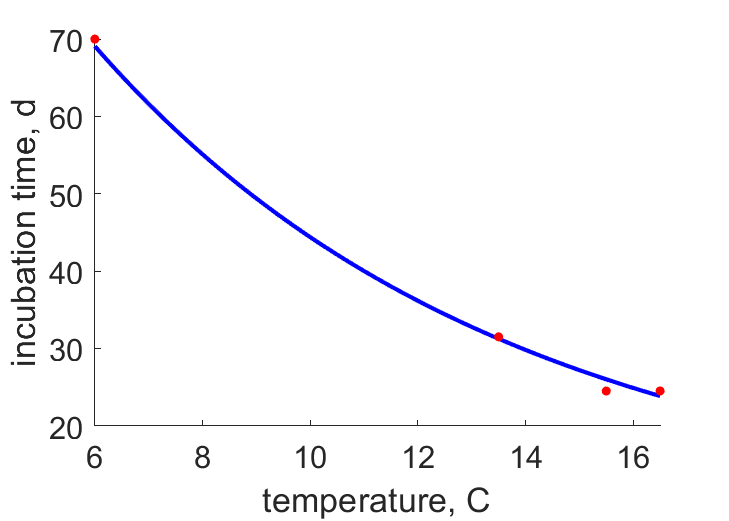 | temperature | incubation time | (0.02769) | fao |
Pseudo-data at Tref = 20°C
| Data | Generalised animal | Crangon crangon | Unit | Description |
|---|---|---|---|---|
| v | 0.02 | 0.02114 | cm/d | energy conductance |
| p_M | 18 | 122.4 | J/d.cm^3 | vol-spec som maint |
| k_J | 0.002 | 0.002 | 1/d | maturity maint rate coefficient |
| k | 0.3 | 0.07239 | - | maintenance ratio |
| kap | 0.8 | 0.7409 | - | allocation fraction to soma |
| kap_G | 0.8 | 0.8029 | - | growth efficiency |
| kap_R | 0.95 | 0.95 | - | reproduction efficiency |
Discussion
- Males are assumed to differ from females by {p_Am} only
- mod_1: males have equal state variables at b, compared to females
Facts
- Larva hatches as 2 mm zoea, develops to a mysis of 3.3 mm (Ref: fao)
- A 86mm female went through 34 moults, a 62 mm trought 30 (Ref: fao)
- Joana Campos applied the DEB model to this species (Ref: Camp2009)
Bibliography